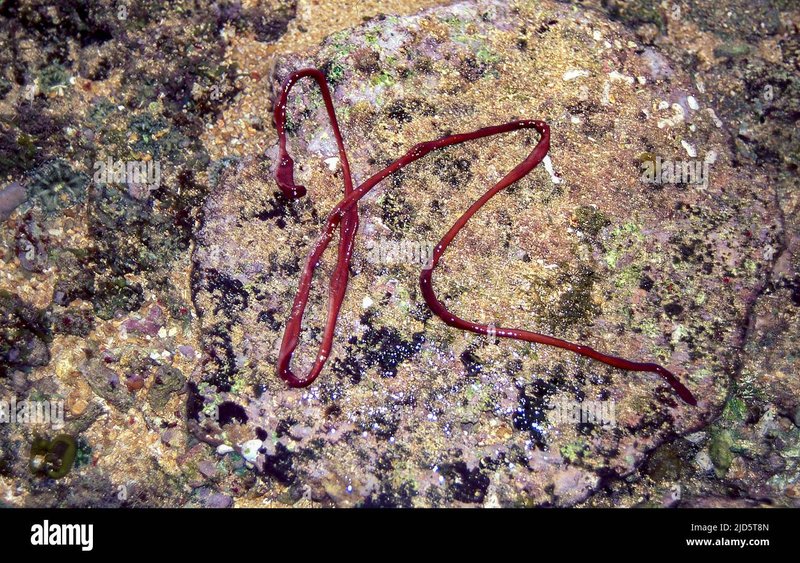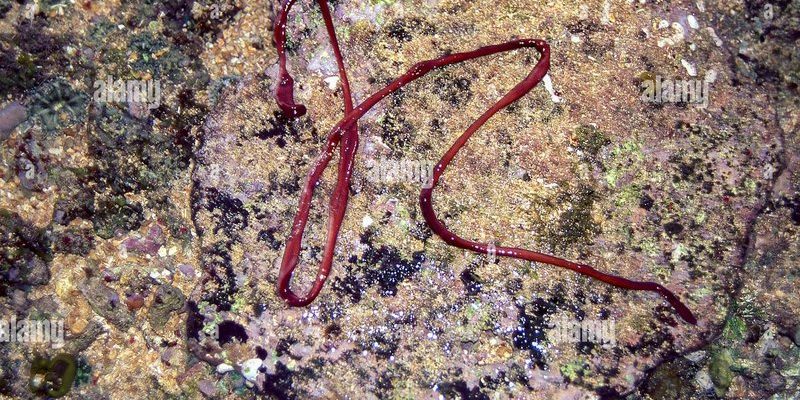
So, what exactly are ribbon worms? They belong to a group called Nemertea and are known for their long, slender bodies. You might notice them wriggling in the sand or floating gracefully in the water, but identifying them can be a bit tricky if you don’t know what to look for. In this guide, we’re diving deep into how to spot and understand ribbon worms in coastal rock pools, helping you appreciate these fascinating creatures even more.
Ribbon worms are soft-bodied invertebrates that can stretch out to impressive lengths—some can grow up to 30 meters! They typically have long, flat bodies that look like ribbons or strands of spaghetti, hence the name. These creatures are often brightly colored, ranging from greens and browns to vibrant reds and yellows, which helps them blend into their surroundings.
One of the most fascinating features of ribbon worms is their ability to extend a proboscis, a long, tube-like structure that can be shot out to capture prey. This is akin to a superhero’s ability to shoot webs—pretty cool, right? They primarily feed on small invertebrates and are a crucial part of the food chain in coastal ecosystems.
Ribbon worms love to hang out in wet environments, particularly in coastal rock pools, tidal zones, and sandy substrates. If you’re hunting for them, look under rocks, among seaweed, or burrowed into the sandy bottom of a pool.
These environments provide a buffet of food options for ribbon worms, as they thrive in areas rich with small crustaceans and other tiny marine creatures. Keep in mind that these worms tend to be more active during specific tides; so timing your visit can increase your chances of spotting them.
Spotting a ribbon worm can be tricky if you don’t know what you’re looking for. Here are some identifying features to help you out:
- Shape: Ribbon worms have long, thin bodies, usually flattened. They can resemble strands of ribbon or noodles when swimming or burrowing.
- Color: Their colors can vary widely. Some are a dull gray or brown, while others are vivid and colorful, showcasing stunning patterns.
- Movement: They move by gliding smoothly over surfaces or by wriggling through the sand, much like a snake. If you see something slithering away, it could be a ribbon worm!
When observing these creatures, be gentle. They’re delicate and can be easily harmed if handled roughly.
Ribbon worms are fascinating not just in appearance but also in their behavior. They are predators and have a voracious appetite for small marine animals. Their diet mainly consists of:
- Small crustaceans (like amphipods and copepods)
- Other soft-bodied invertebrates
- Fish larvae and eggs
When hunting, ribbon worms use their proboscis to capture prey. This action can be quick and precise, allowing them to snatch dinner before it even knows what happened. If you’re observing them in a rock pool, you might see a ribbon worm dart towards a tiny shrimp or a small crab—it’s an impressive sight!
You might be wondering why these seemingly simple creatures are important. Ribbon worms play a crucial role in the health of coastal ecosystems. They help:
- Control prey populations: By feeding on invertebrates, they help keep their populations in check.
- Recycle nutrients: As they consume and decompose organic matter, they contribute to nutrient cycling in their environment.
- Serve as food: They are a vital food source for larger predators such as fish and birds, creating a link in the food web.
This interconnectedness highlights the importance of every species, no matter how small. Losing one link—like ribbon worms—can have ripple effects throughout the ecosystem.
If you’re keen on observing ribbon worms, here are some respectful guidelines to follow:
First, always approach with curiosity, not aggression. Remember, these creatures have delicate bodies and can easily be harmed. Try the following tips:
- Use a gentle touch: If you decide to handle them for a closer look, do so with wet hands to avoid damaging their skin.
- Keep the environment intact: Avoid disturbing rocks or vegetation too much. It’s their home, after all!
- No collection: Leave them where you found them. Observing is great, but taking them out of their habitat can harm the ecosystem.
By treating ribbon worms and their homes with respect, you’re contributing to the overall health of coastal ecosystems.
Final Thoughts on Ribbon Worms
Finding ribbon worms in coastal rock pools can be a delightful surprise. While they might not be as popular as other marine life, their unique characteristics and vital ecological roles deserve appreciation. So next time you’re out by the shore, take a moment to peek into the rock pools. You just might discover the amazing world of ribbon worms and other sea creatures that are waiting to be explored.
In the grand tapestry of marine life, every thread counts, and ribbon worms are definitely threads worth noticing!

